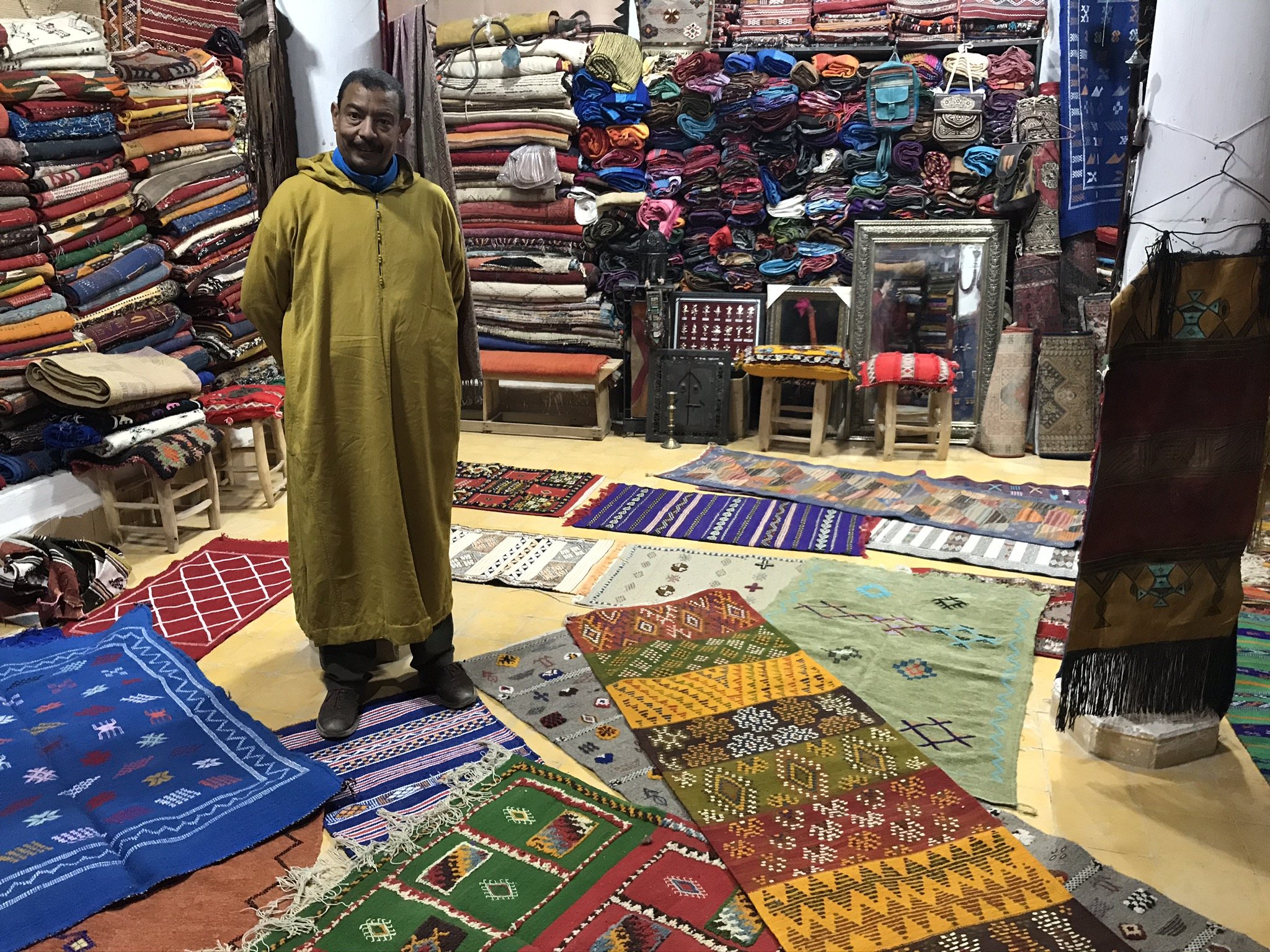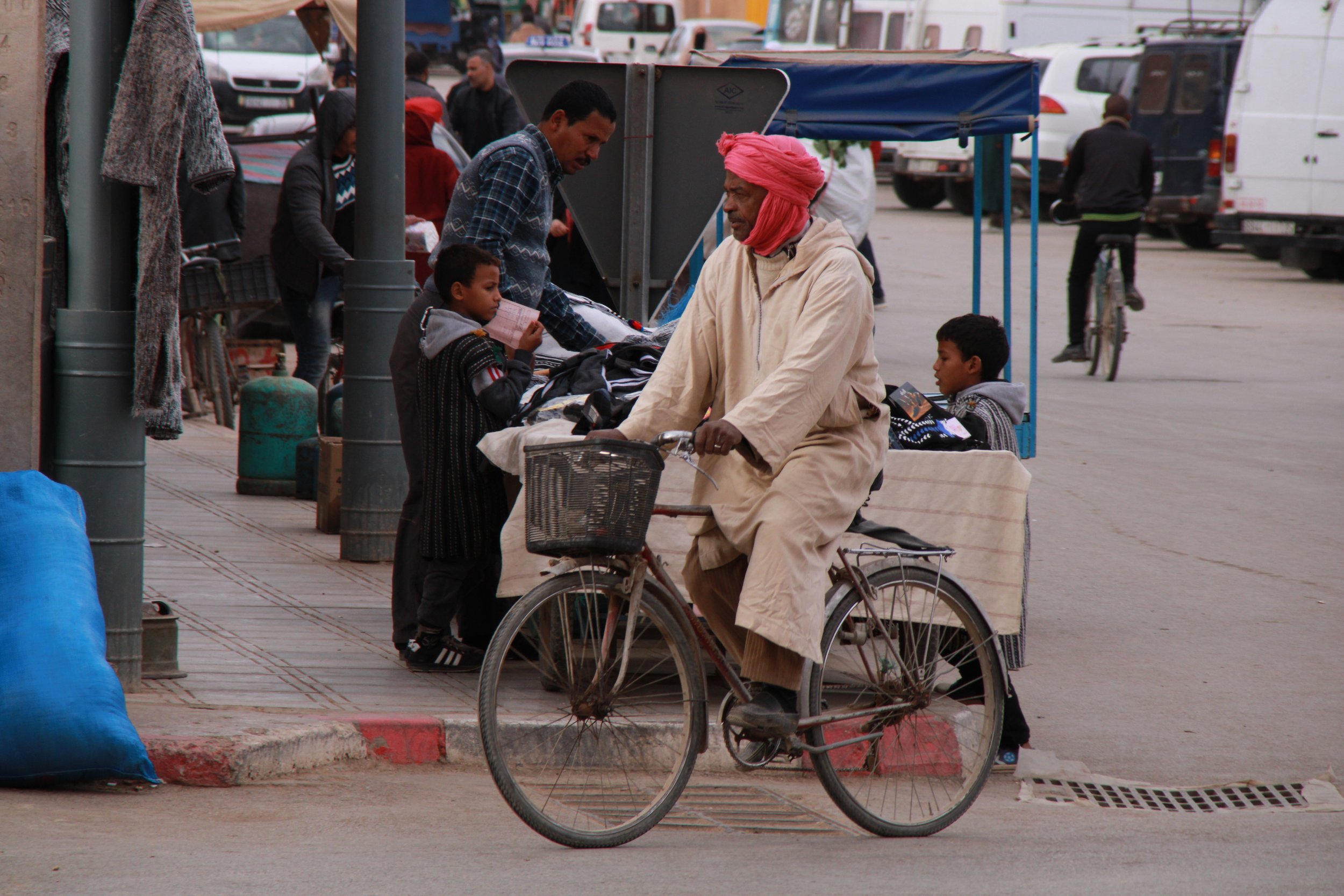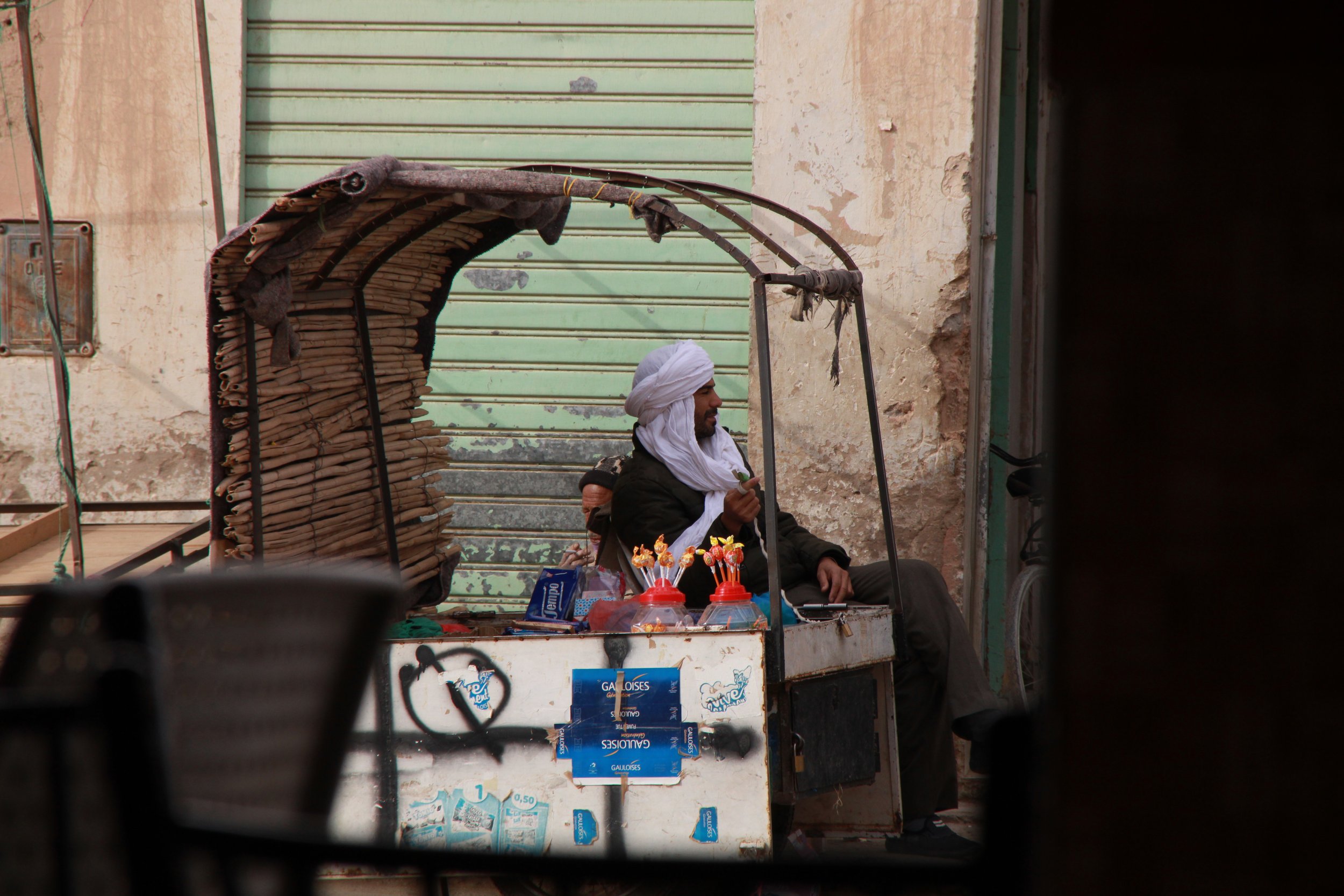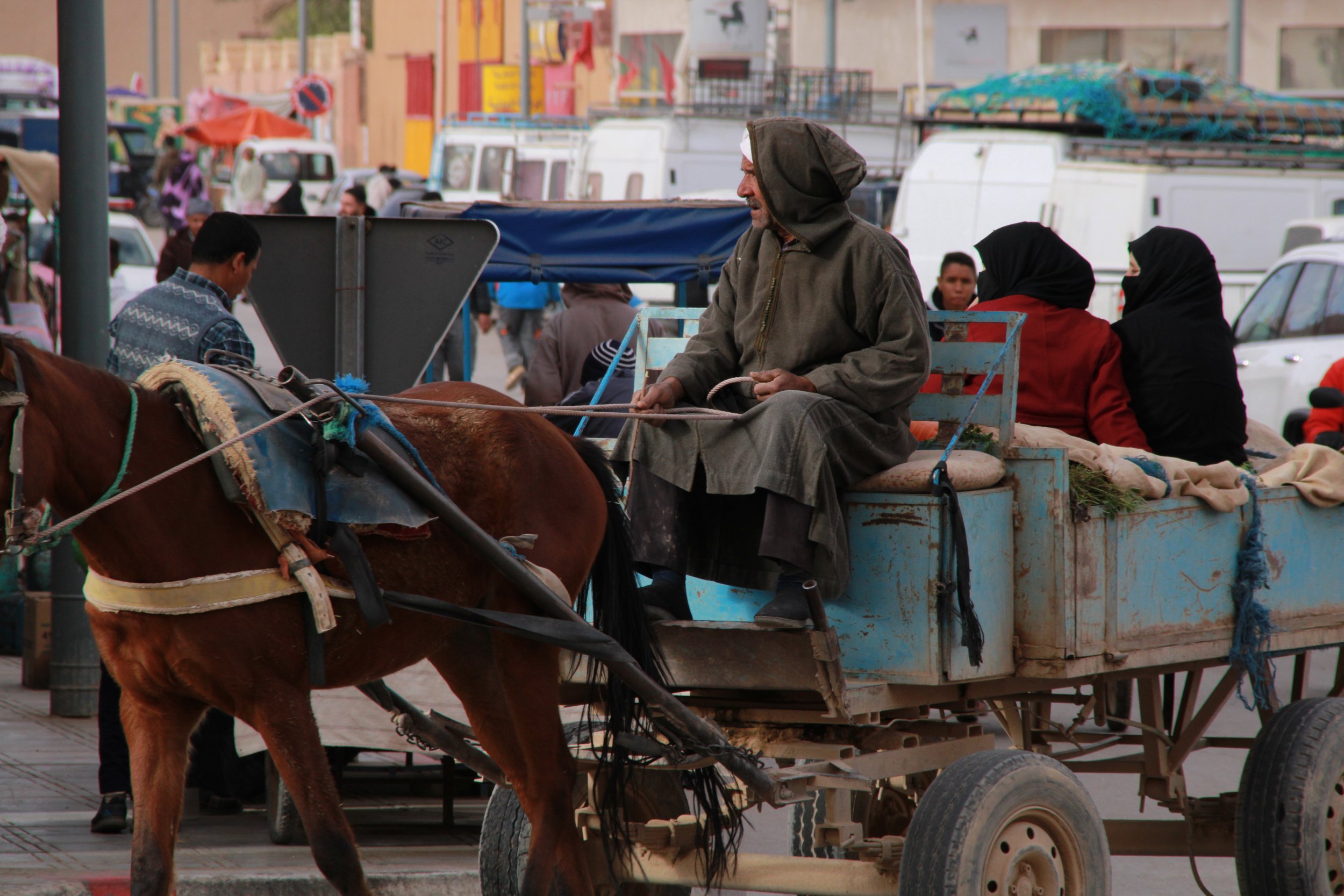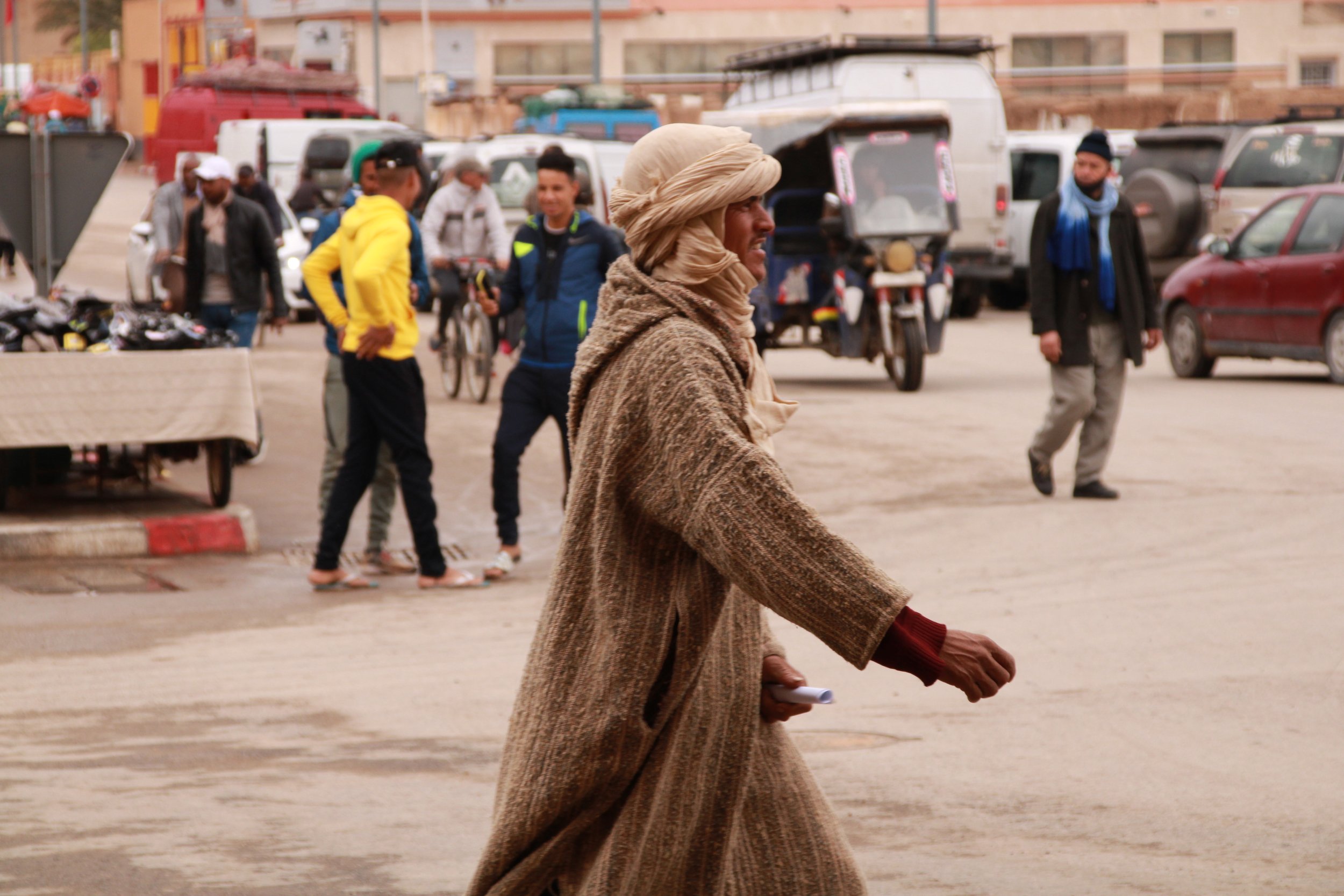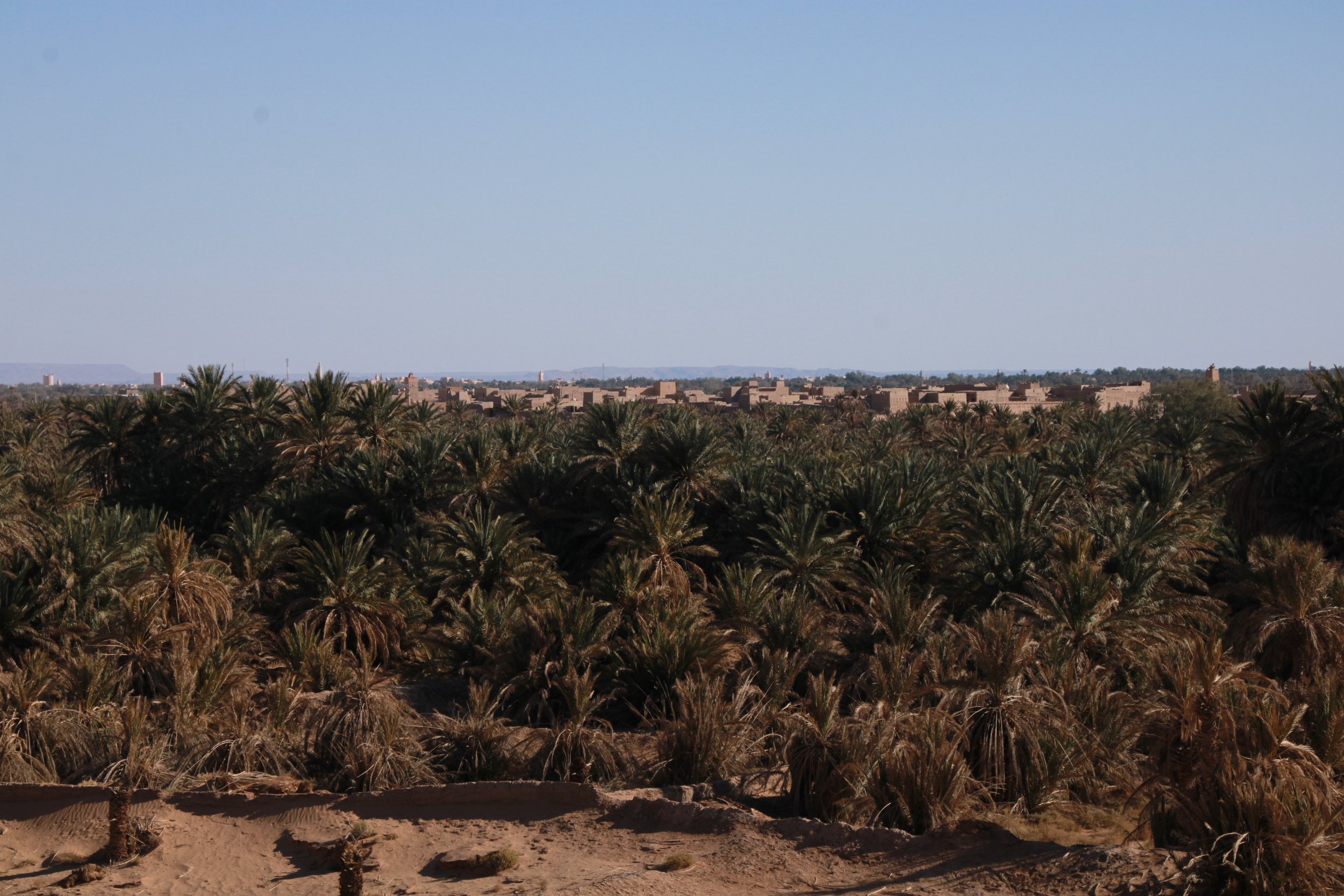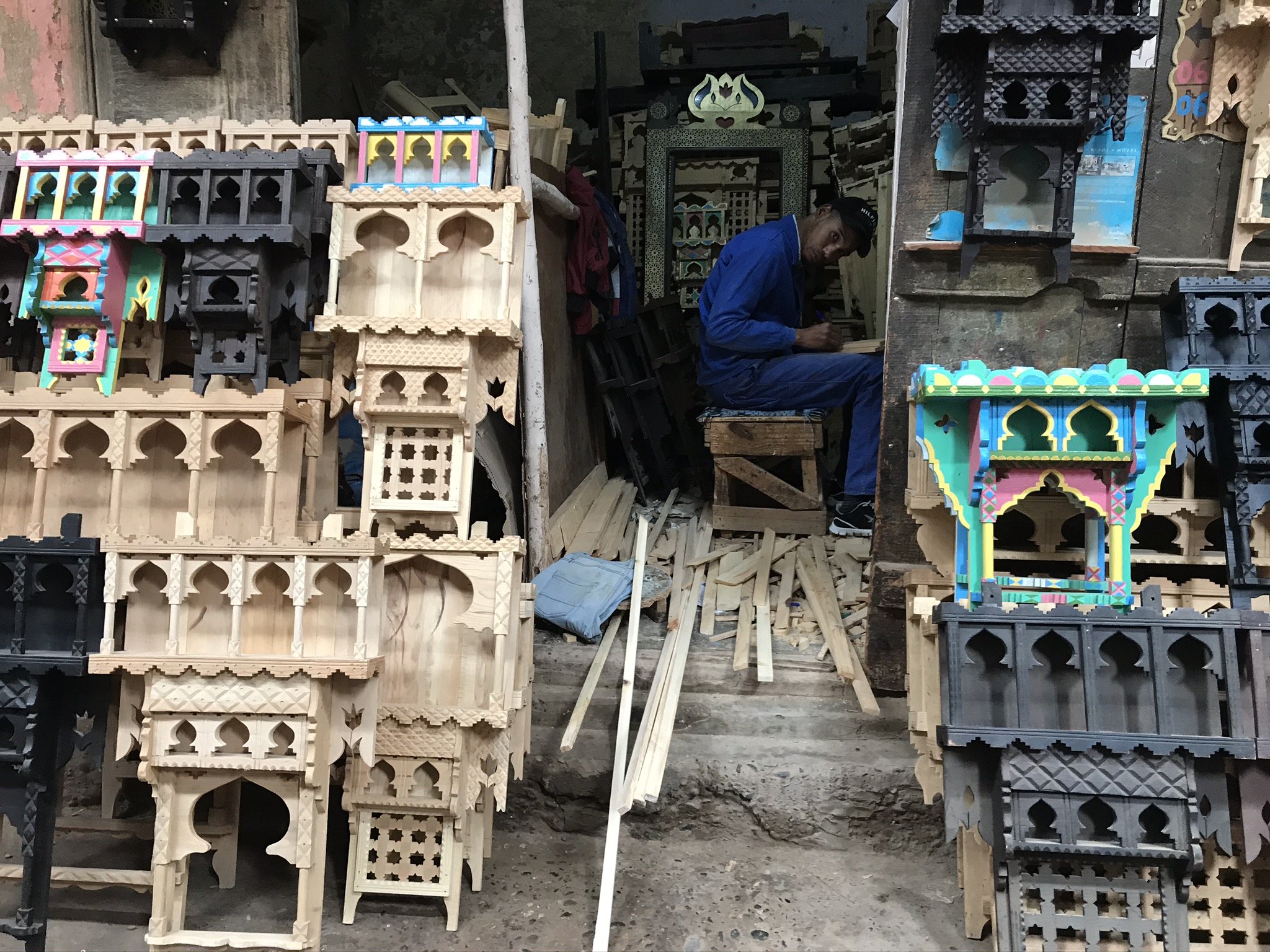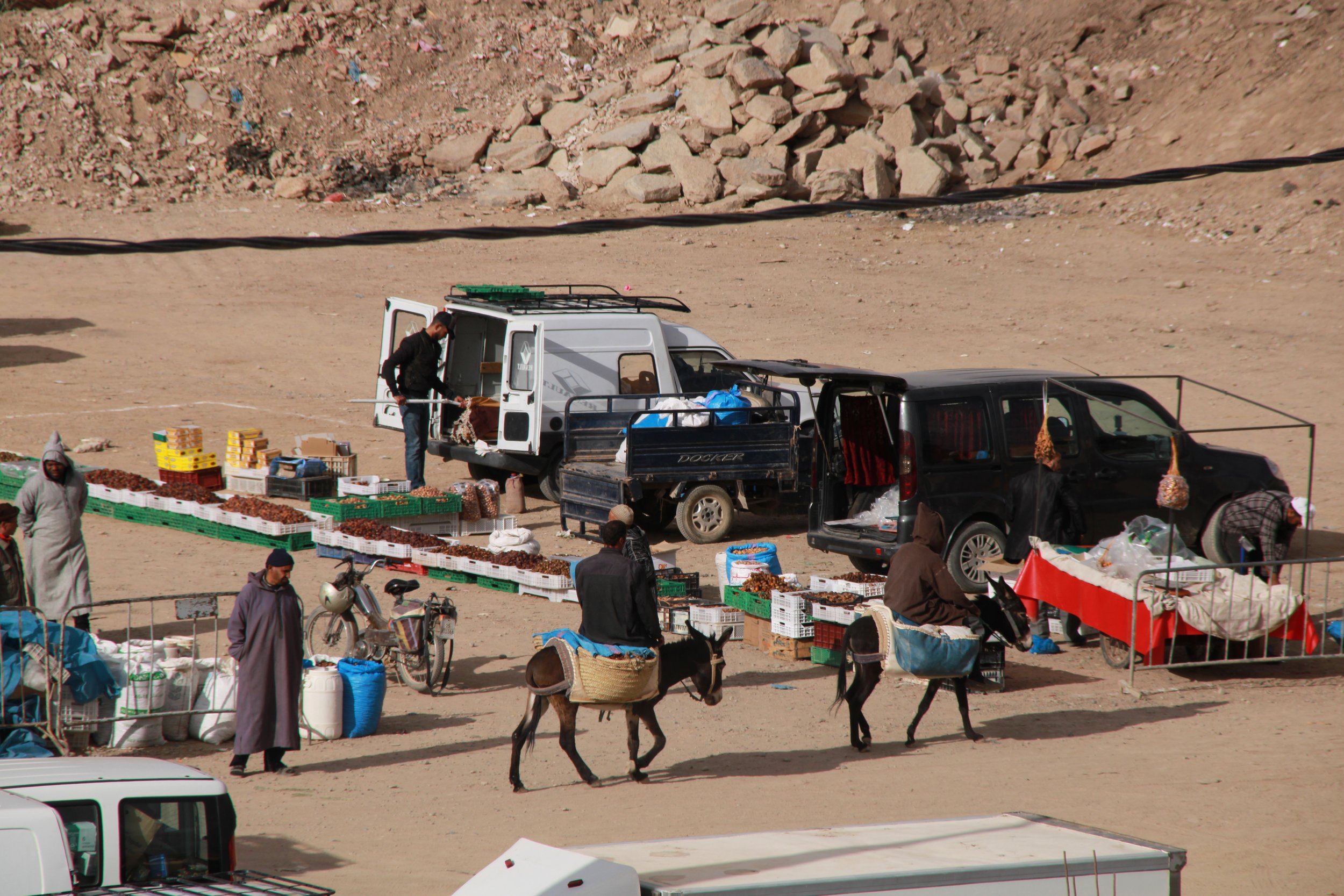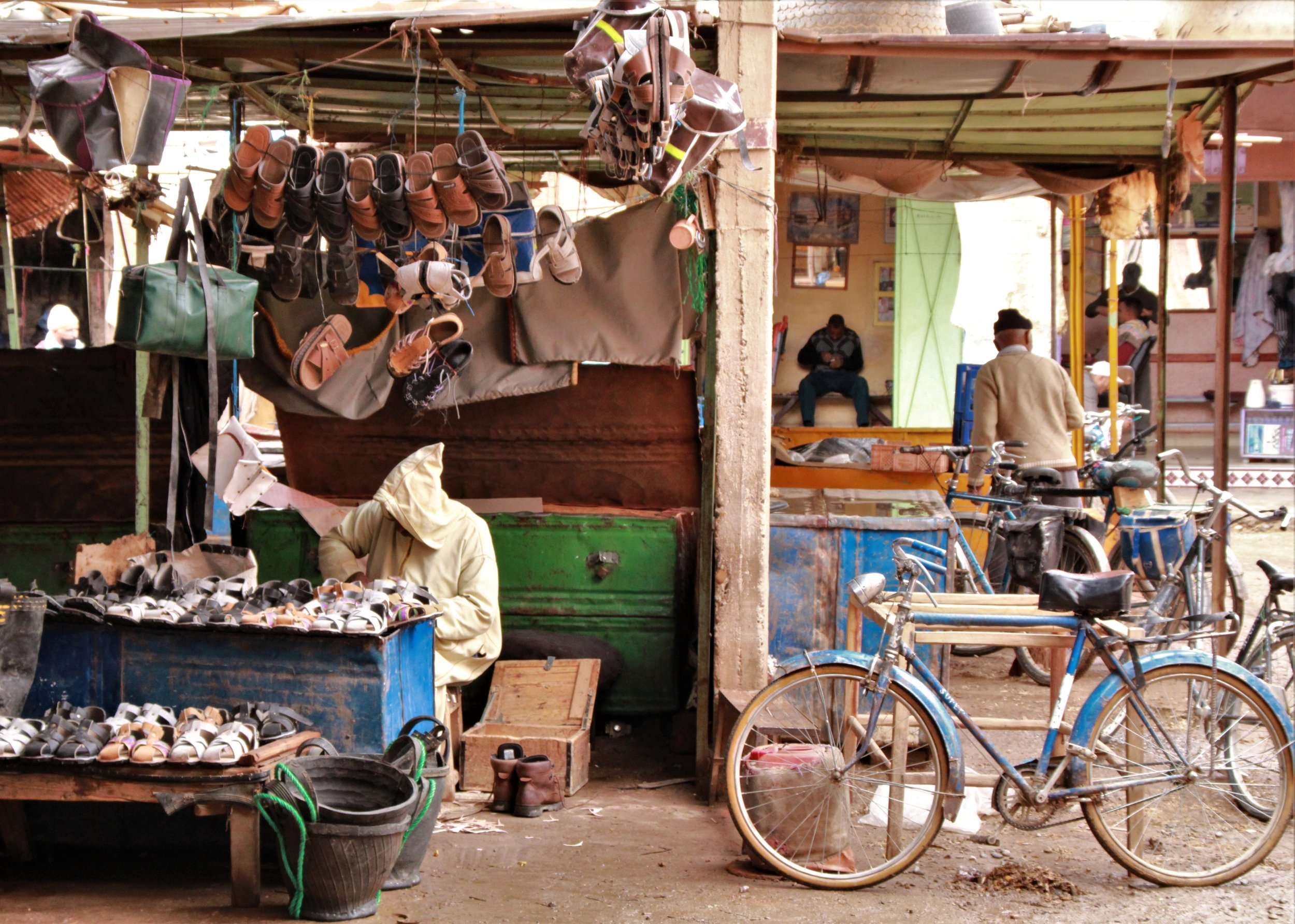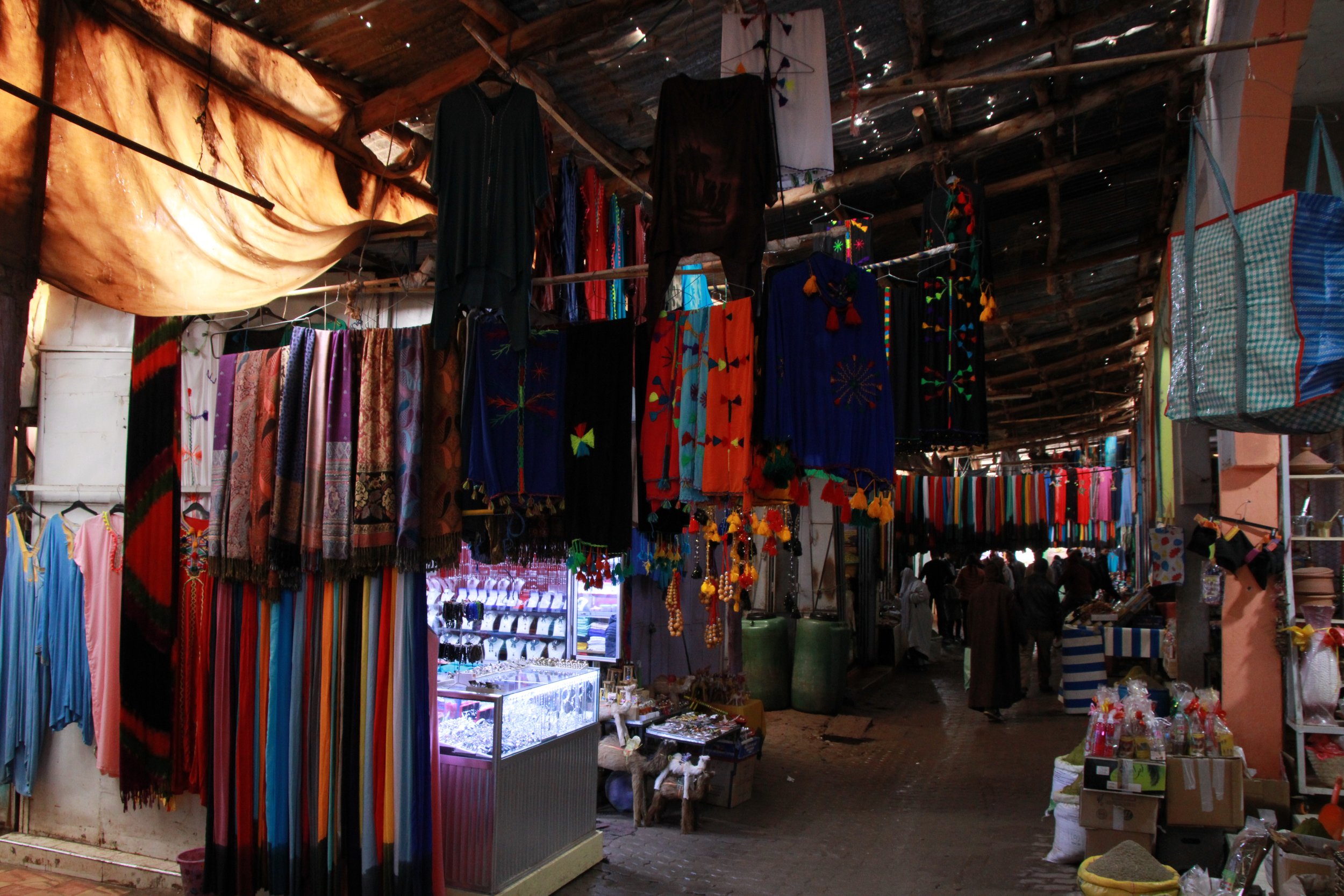Go to a bus station in Fes after dark. Tell them you want to go to Rissani, and then reject their urgings to visit Merzouga, even if they have a friend there; especially if they have a friend there. Then if you can sleep on the bus, wonderful. If not, gaze at the Atlas Mountains under the stars.
When you arrive, you’ll be in the heart of Morocco; where it all began. Where the caravans began, where the kingship began, where the Arabs first taught the desert inhabitants how to grow dates.
Today, Rissani is overshadowed by tourist traps either side of an expanse of the Moroccan Sahara. A kilometer or so north of the city, the dry heat has preserved the oldest ruins of a trading post that dates back to the 8th century; the oldest city in Morocco by some estimations, and the birthplace of the imperial dynasty.
“Rissani is not the real name, the real name is Sijilmassa,” says Mustafa, a caravan trader who has lived in Rissani his whole life, and who sells art, jewelry, and caravan goods during the wetter months. “Sijilmassa was the Door of Africa. 52 days by camel to Timbuktu. The caravans go, they take salt, and we make change—swap. We make swap, we give salt, slaves, and we get back gold”.
Having raised three children on camel caravan earnings, he is happy to coax the odd traveler into his shop and regale them with stories of Rissani’s great past.
Today, Rissani is still a destination for what remains of the traditional Saharan trade routes. The souk at the heart of the town still sees caravans of camels and lorries alike loaded and unloaded, with animals, dates, fabrics, herbs, and goods from countries further south, sold and loaded up again for passage to future destinations.
In a country that has become the most-visited of any African nation, and is one of the most tourist-friendly places in both the African continent and the Arab world, Rissani is a place to see an older Morocco, the kind that enchanted Westerners from the early Romans to authors like Paul Bowles.
City of kings and dates
“Rissani is the city of the king, the Alaouite Dynasty. They say Fes is the old city of Morocco, this is not true. Sijilmassa is 32 years older than Fes,” said Mustafa. Indeed the mausoleum of Moulay Cherif, the great-grandfather of the first king of Morocco can be found there.
Sometime in the 8th or 7th century, or perhaps even before that, when the Arab conquest of the Middle Ages had not begun in earnest, Arabians came to Sijilmassa where rivers that have long since been dammed or diverted left the area green and lush with date palms.
It was the Arabians, Mustafa explained, who first told the Berbers and others who lived there how to cultivate dates by introducing male and female fruit-bearing species near enough to create cross-pollination. A wide variety of dates are to be had there today, from the big, wrinkled “Medjool” dates that make their way to markets across the West, to the smaller, harder, cream-colored “carnishi dates” favored by Moroccans themselves.
Mustafa went further to say that in earlier times, the common name for Sijilmassa was something like “your word,” or “on your word,” because the inhabitants agreed with the Arabs that in exchange for teaching them how to cultivate dates, they would give over between a quarter and a third of all dates produced.
